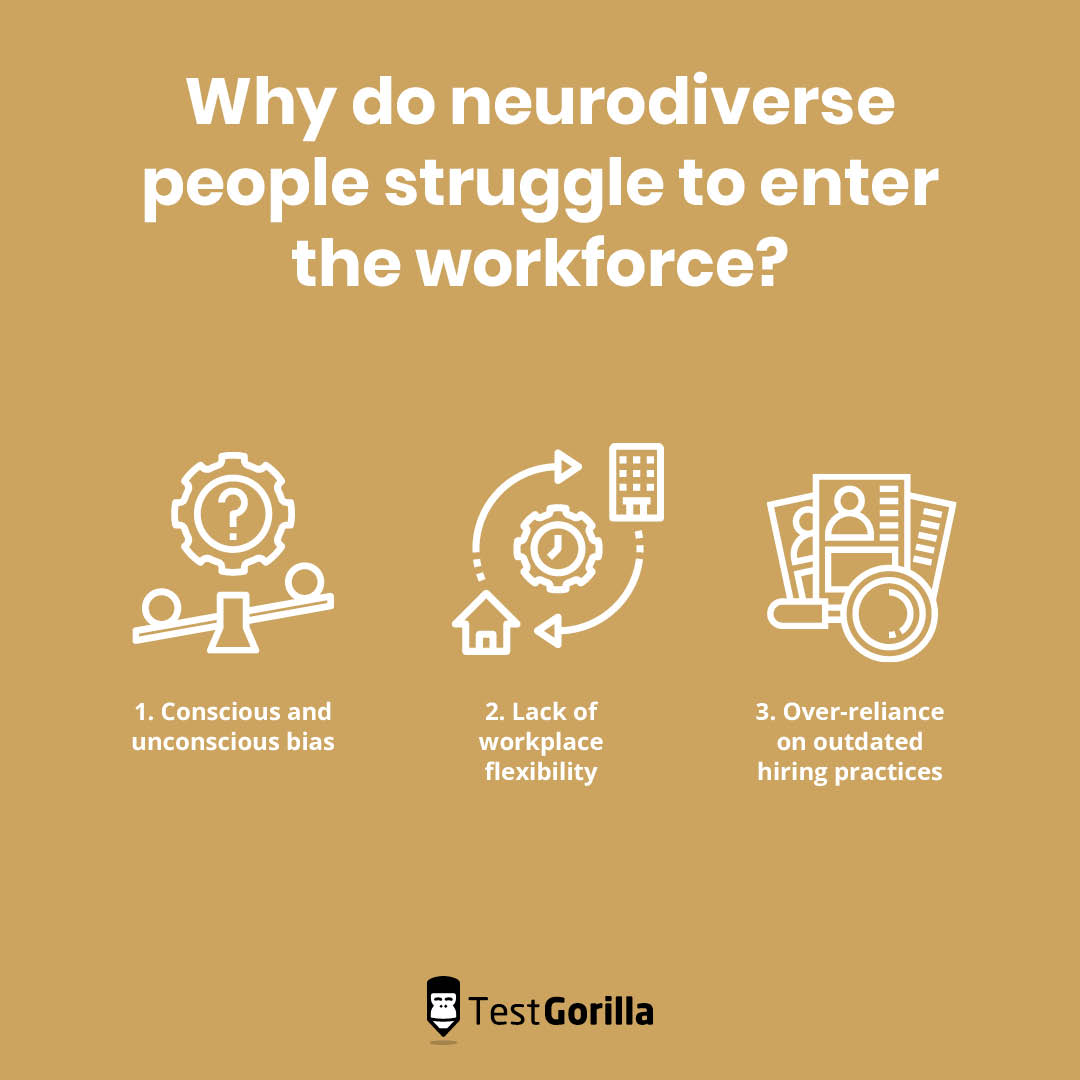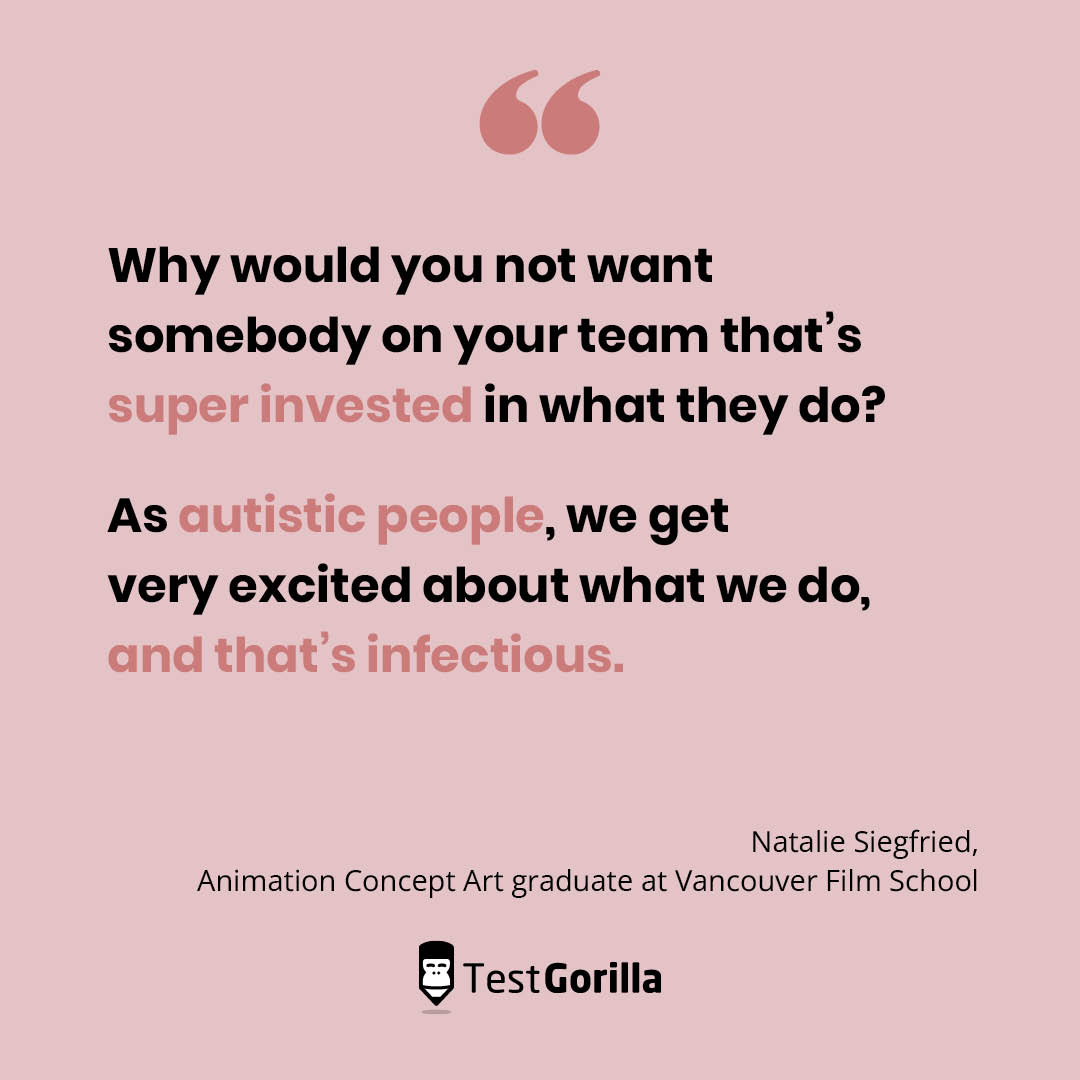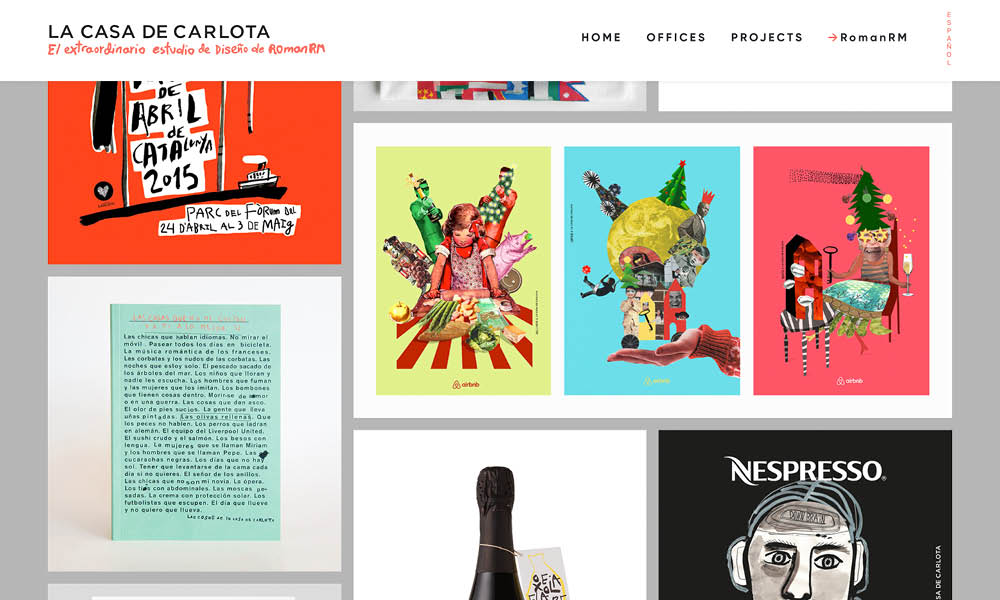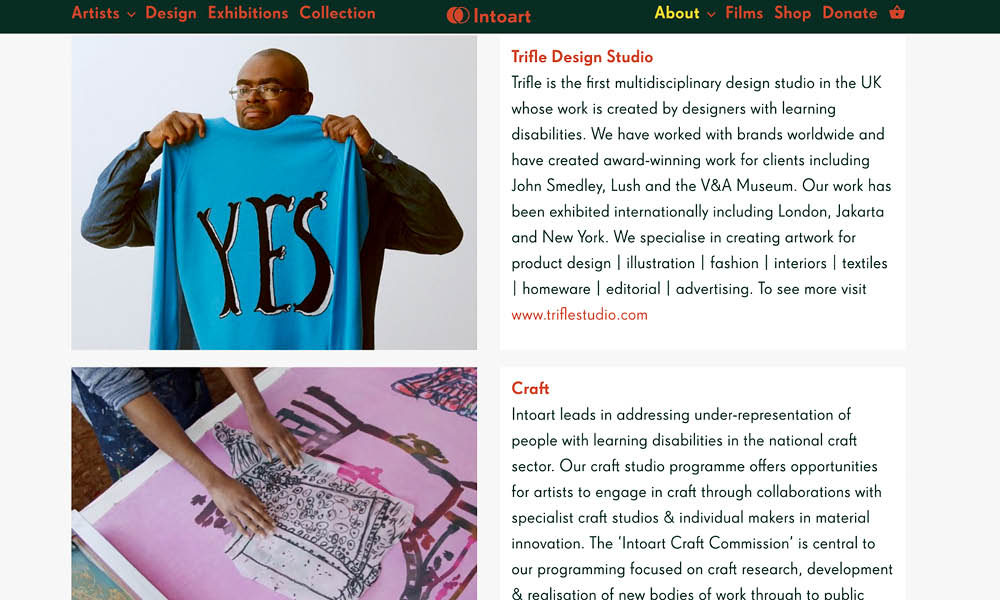As a society, we’ve taken some big steps towards normalizing and embracing neurodiversity. Diagnoses are on the rise and a number of high-profile celebrities, like Elon Musk, Wentworth Miller, and Greta Thunberg, have felt comfortable to “come out” as neurodiverse.[1]
However, this is far from the norm when it comes to employment. Autistic people experience the second lowest employment rate among all people – those with disabilities and otherwise.[2] Neurodiverse individuals are more likely to be unemployed due to conscious and unconscious bias, inflexible work environments, and an over-reliance on outdated hiring practices.
Fortunately, a number of organizations in the design world have created programs to meet the challenges and foster neurodivergent talent.
In this piece, we’ll look at examples of organizations that have taken meaningful steps to specifically recruit autistic people and explore how any organization, regardless of industry or location, can help build a better, safer work environment for neurodiverse people.
Table of contents
- Neurodiversity and the workplace: What is the neurodiversity employment gap?
- Why companies should embrace neurodiversity when hiring
- Design and neurodiversity
- Two design companies that are meeting the challenge
- How skills-based hiring helps to close the neurodiversity employment gap
- Beyond accommodation: What the design sector teaches us about embracing neurodiversity
- Sources
Neurodiversity and the workplace: What is the neurodiversity employment gap?
Let’s start with some definitions.
Neurodiversity is an umbrella term that recognizes and embraces the natural variations in human brains and the way they function. According to Harvard Health Publishing, it “describes the idea that people experience and interact with the world around them in many different ways.”
Conditions like dyspraxia, dyscalculia, dyslexia, autism, attention deficit hyperactivity disorder (ADHD), and Tourette syndrome are all on the neurodivergence spectrum.
When it comes to describing individuals on the neurodivergent spectrum, it’s important to prioritize each person’s unique preference. When referring to the community as a whole, it’s best practice to follow what the majority of the community prefer. For example, the majority of the autism community prefers the identity-first term of “autistic people,” rather than “people with autism.”[3]
Consider this: Autism frequently goes undiagnosed or underdiagnosed in girls, women, and feminine-presenting people. Because these individuals often “mask” and defy stereotypically autistic presentations, it can be difficult for them to find support and understanding – especially in a professional setting.[4]
While neurodiversity is slowly but surely being acknowledged and accepted in society, it still presents challenges in the workplace. Only 29% of autistic adults are employed, which makes their unemployment rate a staggering 71%. Figures for other neurodivergent conditions are similarly shocking.
As a consequence, there’s an uncomfortable gap between the number of neurodivergent people who are looking for work and those who are actually in the workforce. This is due to a variety of factors, including:
Conscious and unconscious bias
Neurodivergent people often face ableist bias and lack of understanding from their colleagues, supervisors, and employers. They may be unfairly judged, excluded from opportunities, or even laid off. For example, a neurodivergent person might have “job-hopped” in the past due to unequipped or ableist managers. To a hiring manager without bias training, that might look like they’re not serious about their career or are “unreliable.” As a consequence, they’re screened out.
Lack of workplace flexibility
Flexibility is key to helping neurodivergent professionals maximize their talents and reduce the impact of their challenges. Having autonomy over schedules and working hours reduces their stress levels, helps them avoid overstimulation, and allows them to build a work-life balance tailored to their needs.
Work-from-home was brilliant [during] COVID because anyone who’s neurodivergent and couldn’t handle people and noise [could] be more productive at home. So companies need to bear that in mind and make exceptions for people as long as they’re delivering.
Kate Wardle, neurodiversity consultant and active member of UK charity Neurodiversity in Business
Over-reliance on outdated hiring practices
Many neurodivergent individuals struggle with social communication, executive functioning, and sensory processing. These challenges make it difficult to navigate the demands of a traditional workplace, which often prioritizes conformity, teamwork, and communication skills. Judging neurodivergent people based on criteria set up for neurotypical people does them a disservice.
“A lot of recruitment processes are geared to neurotypical people,” says Kate, “so you’re not going to get the best out of someone who is neurodiverse in a typical interview situation.”
To address these challenges and close this employment gap, companies should adopt a neuro-inclusive approach. By doing so, they can support neurodivergent individuals and also benefit from the unique strengths and perspectives they bring to the table.
Finally, designing and accommodating for neurodivergence and disability doesn’t just benefit neurodiverse individuals – it helps everyone. For example, remote work reduces everyone’s stress levels and brings flexibility to all employees, while helping neurodiverse people in particular navigate work better.
Why companies should embrace neurodiversity when hiring
Companies should make a concerted effort to hire neurodiverse candidates. As well as providing support to a group of workers that can struggle to find and keep regular employment, they’ll be able to access skills and talents that are unique to neurodivergent employees.
Having passionate and specific interests is a common attribute of many autistic people. These interests are typically called “hyperfixations.” When your hiring practices are optimized to help autistic people find work in a field that’s aligned with their hyperfixations, their intense focus becomes the essential source of their success. They give 100% to what they do – not because they have to, but because it’s how they operate.
“The intensity of neurodiversity brings advantages,” says Kate Wardle. “People can hyperfocus, they don’t get distracted. They’re interested in a topic to a degree that neurotypicals aren’t, which means better problem-solving.”
There are numerous other advantages to having a diverse workforce – for employees, organizations, and their clients. Employees are more likely to be engaged at work when they believe their organization prioritizes an inclusive culture. Furthermore, with diverse teams come diverse ideas.
When your people are from various backgrounds and have different cognitive talents, they bring a variety of viewpoints and approaches. This gives your organization a competitive advantage because your team is able to be more innovative, solve problems more creatively, and give your clients the best possible solutions.
Finally, high levels of diversity in an industry create a virtuous cycle – an abundance of diverse role models gives members of marginalized groups hope for pursuing a given career.
“It makes you hopeful,” says Natalie Siegfried, Animation Concept Art graduate at Vancouver Film School. “You think, ‘oh I could be in that position. Other instructors have made it. They’re respected artists in their fields. I can do that too.’ People listen to them and take them seriously, even though they [think and] talk in a different way. You don’t have to change in order to be in a position of authority. I always thought that was something I would struggle with… I didn’t know it would be a possibility for me with the way I communicate. It makes me happy that the world is changing in that way.”
Remember: Trying to recruit neurodiverse people isn’t enough. You need to actively take steps to create a psychologically safe environment. By doing so, your people feel safe enough to be themselves, not fearing retribution for how they operate.
The best insights on HR and recruitment, delivered to your inbox.
Biweekly updates. No spam. Unsubscribe any time.
Design and neurodiversity
Creative fields have long been known for being more accepting. Neurodivergence is largely valued in creative spaces and many workplaces have environments and practices where neurodiverse workers can thrive – for example, the ability to work independently, the option to work remotely, or the lack of a strict dress-code.
“Sometimes, you’re distracted by [clothing] textures all day,” says Natalie. “So instead of putting 100% into whatever you’re doing, 40% of [your mind] is constantly… distracted. Your capacity can be limited. But [in the creative world] you’re free to wear stuff that’s more comfortable for you.”
In addition to its inclusivity, design work can suit neurodivergent individuals for different reasons, as it often requires a unique combination of skills and traits that many of these individuals possess.
Here are some reasons why neurodiverse skills bring benefits to the design world:
Attention to detail: Many neurodivergent individuals have a strong attention to detail and are able to notice patterns and nuances that others might miss. This can be an asset in design work, where attention to detail is critical.
Focus and persistence: People who are neurodivergent often have a strong ability to focus intensely on a task or topic, i.e.“hyperfocus.” This means they can persist with a task for extended periods of time which can be an asset in design work, where projects can be complex and require sustained effort.
Flexibility: Many neurodivergent people prefer a flexible work environment that allows them to work independently and at their own pace, in addition to letting them make their own path. Design work can often offer this type of work environment, which is more accommodating to their needs.
Creative thinking: Many autistic creatives have a unique perspective and can think outside the box, which can be valuable in design work that requires creative problem-solving and innovation.
In design, everything is [about] problem-solving. [Clients] want things done a certain way, and you have to achieve that. You want as many options as possible to present to your clients, and someone with a different way of thinking is going to come up with something totally different. Why would you not want somebody on your team that’s super invested in what they do? As autistic people, [we] get very excited about what [we] do, and that’s infectious.
Natalie Siegfried, Animation Concept Art graduate at Vancouver Film School
Two design companies that are meeting the challenge
While there’s still much work to be done, we can be confident about the way the design sector has improved diversity, promoted inclusion, and embraced neurodiversity.
So what does hiring, retaining, and welcoming neurodivergent individuals look like? Let’s see how two innovative creative organizations have done just that.
Casa de Carlota
Casa de Carlota is a professional design studio specializing in advertising, creative campaigns, logos, and branding. What makes this agency stand out is its approach to creating a highly diverse and inclusive team. The studio predominantly hires neurodiverse professionals, such as those with autism, along with people with other disabilities such as Down syndrome. This helps the company create a truly neurodiverse team.
Casa de Carlota was the first advertising firm in Spain to receive the B Corp certification, a certificate awarded to companies that develop a sustainable activity and demonstrate adherence to the principles of respect for the environment and social transformation
Thanks to its diverse talent, the studio is known in Barcelona for its bold, unique designs.
Casa de Carlota is an innovative design agency based in Barcelona, known for bold, unique designs. Source: Casa de Carlota
“We wanted to experience what happens when we take the creative process to the limit,” the agency notes. “What happens if an experienced creative works with a fine art student or with a person born with Down’s syndrome? And how can the unexpected brain of a person with autism influence and question linear thoughts?”
The company is made up of three main profiles, or pillars. The first pillar consists of their neurodivergent designers. They work closely with the second pillar, which is made up of art and design students who bring a fresh perspective and vision to the team. Finally, the third pillar of the team includes senior designers and art directors, who lead the programs.[5]
Together, these three groups have built a highly diverse environment that drives the change toward a better, more inclusive future.
Intoart
Intoart is a London-based visual arts charity and studio run by autistic artists and individuals with learning disabilities to create a wide range of unique and innovative art and design pieces. Established in 2000 by artists Ella Ritchie and Sam Jones, this studio was the first of its kind globally.[6]
“Most of the time,” says Ella, “people just don’t perceive people with learning disabilities as independent cultural producers in their own right.” That’s why the studio aims to challenge stereotypes and promote the talents of individuals with learning disabilities through their work.
Their vision? For people with learning disabilities to be visible, equal, and established artists.
Since its founding, Intoart has grown to become a respected and innovative studio. They work with a range of materials and techniques, including painting, printmaking, ceramics, textiles, and digital media.
In addition to creating art and design pieces, Intoart also offers professional development opportunities for their artists and designers, helping them to build their skills and pursue their careers in the arts. They also work with a range of partners, including museums, galleries, and community organizations, to promote the inclusion of people with learning disabilities in the arts.
According to co-founder Ella, Intoart utilizes its community networks and collaborates with social services, further education, and voluntary sector organizations like the National Autistic Society to recruit their artists. They also actively reach out to their community to attract neurodivergent individuals.
“People don’t come with a portfolio,” says Ella. “It’s not like going to art school where you’ve had the chance to build a portfolio… Because as an adult with a learning disability, things really drop off in terms of opportunities for employment and education… So for us, it’s very much about reaching out and having conversations about whether somebody really wants to try it and has the appetite for it.”
Want to know more about how Intoart started and became the innovative agency it is today? Check out Ella Ritchie’s interview on the On Design podcast.
How skills-based hiring helps to close the neurodiversity employment gap
Skills-based hiring helps you find the best people for your open positions by focusing on individuals’ skills instead of their education, experience, and physical or neurological ability. It levels the playing field for all candidates and removes the bias found in resume-based hiring.
Competency-based recruitment works by using targeted skills tests or assignments to measure candidates’ actual ability to perform in their potential roles. This reduces the possibility of bias creeping into your hiring process, meaning you can select people who are a better fit for the job.
Resumes often don’t display an autistic person’s real talent. TestGorilla’s own Sheena Muirden, our content marketing coordinator, is a neurodivergent person with a mixed professional background. She says her work history of being a waitress and working at an airline would normally have prevented her from securing a marketing role, which is where she really shines. But, as TestGorilla doesn’t rely on resumes, we were able to spot her talent.
By basing a candidate’s value on the skills they actually bring to the table, you can create an inclusive and diverse workforce – and drastically improve business outcomes.
According to our 2022 State of Skills-Based Hiring report, 91% of companies using skills-based hiring saw an increase in workplace diversity and improvements in four key metrics:
Reduction in mis-hires (92.5%)
Reduction in total time-to-hire (91.4%)
Reduction in total cost-to-hire (89.8%)
Increase in employee retention (91.2%)
That’s not to say it isn’t overwhelming to get started with hiring neurodivergent individuals. But, according to Kate Wardle, that doesn’t mean you should start. She says, “It could be as simple as raising awareness within your company.” By doing this, you can open people’s minds to the idea of recruiting to create a truly neurodiverse business – and the benefits that it will bring to your business.
Beyond accommodation: What the design sector teaches us about embracing neurodiversity
We’ve come a long way when it comes to acknowledging and accepting neurodiversity in society. But these individuals still face bias and challenges in the workplace.
That’s mainly due to:
Conscious and unconscious bias
Lack of workplace flexibility
Over-reliance on outdated hiring practices like resumes
To address these challenges and close the gap, companies should adopt a neurodiversity-inclusive approach – not just because it’s the right thing to do, but also because it will benefit their business.
In addition to supporting neurodivergent individuals, you also benefit from the unique strengths and perspectives they bring to your organization, making it more innovative and creative. Plus, recruiting these individuals lets you tap into a huge source of candidates, putting you in a prime position to win the talent war**.**
The design sector is a field known for embracing neurodiversity and reaping the rewards. You’ve now seen how two creative organizations, Casa de Carlota and Intoart, hire, retain, and welcome these individuals.
What these two organizations are doing is a big step in the right direction – and if it can be done in Spain and the UK, then it can be done anywhere.
Neurodiversity isn’t just a box to check – it benefits your employees, your business, and your clients.
Discover how skills-based hiring can help you build happier and more productive teams from a wide talent pool by reading our State of Skills-Based Hiring Report.
Sources
“Prevalence and Characteristics of Autism Spectrum Disorder Among Children Aged 8 Years — Autism and Developmental Disabilities Monitoring Network, 11 Sites, United States, 2018.” CDC. Accessed February 27, 2023. https://www.cdc.gov/mmwr/volumes/70/ss/ss7011a1.htm
“Outcomes for disabled people in the UK: 2021.” ONS. Accessed February 27, 2023. https://www.ons.gov.uk/peoplepopulationandcommunity/healthandsocialcare/disability/articles/outcomesfordisabledpeopleintheuk/2021
“Should You Say ‘Person With Autism’ or ‘Autistic Person?’” Verywellmind. Accessed February 27, 2023. https://www.verywellmind.com/should-you-say-person-with-autism-or-autistic-person-5235429
“Autism Is Underdiagnosed in Girls and Women.” Psychology Today. Accessed February 27, 2023. https://www.psychologytoday.com/us/blog/understanding-the-diversity-in-neurodiversity/202202/autism-is-underdiagnosed-in-girls-and
“50 game changers: La Casa de Carlota.” Special Olympics. Accessed February 27, 2023. https://www.jointherevolution.org/50-game-changers/la-casa-de-carlota
“This is the first ever design studio run by artists with learning disabilities and autism.” Digital Arts. Accessed February 27, 2023. https://www.digitalartsonline.co.uk/features/illustration/this-is-first-ever-design-studio-run-by-artists-with-learning-disabilities-autism/
You've scrolled this far
Why not try TestGorilla for free, and see what happens when you put skills first.



















